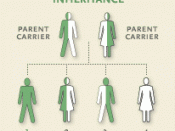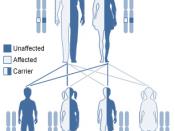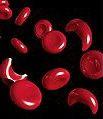Synopsis
Homocystinuria is an inherited disorder of the metabolism of the amino acid methionine.
Homocystinuria is thought to be inherited as an autosomal recessive genetic trait, which means the gene defect is unknowingly passed down from generation to generation. This faulty gene only emerges when two carriers have children together and pass it to their offspring. For each pregnancy of two such carriers, there is a 25% chance that the child will be born with the disease and a 50% chance the child will be a carrier for the gene defect.
Studies conducted since 1979 show that 1 of every 200,000 live births in the Unite States will have homocystinuria. Prevalence in Great Britain, Ireland, and Australia is approximately is 1 in 82,000 live births.
Amino acids are the building blocks of protein. Of the 20 amino acids found in body protein, 8 cannot be made by adults and must be obtained from foods.
These are considered essential amino acids. Normally, the protein we eat is broken down or "metabolized" in our bodies into amino acids and used for growth and tissue repair.
People who are born with homocystinuria are unable to properly break down methionine, an amino acid found in food. In people not affected by homocystinuria, methionine is used by the body for growth and repair. Leftover methionine will lead to homocysteine and then to cysteine. Excess homocysteine is changed back to methionine. This balance is assisted by vitamins, and may occur as mildly delayed development or
Most people with homocystinuria are missing cystathionine B-synthetase, the enzyme that changes homocysteine into cysteine in the liver.
Usual findings in homocystinuria are nearsightedness, dislocation of the lens of the eye, and a tendency to develop blood clots in the veins and arteries.
Newborn infants appear normal, and early symptoms, if...



Genetics/Heredity
Good information; however, the essay would read much better if you move paragraphs around to follow some type of sequence. Also , try to avoid single sentence paragraphs.
0 out of 0 people found this comment useful.